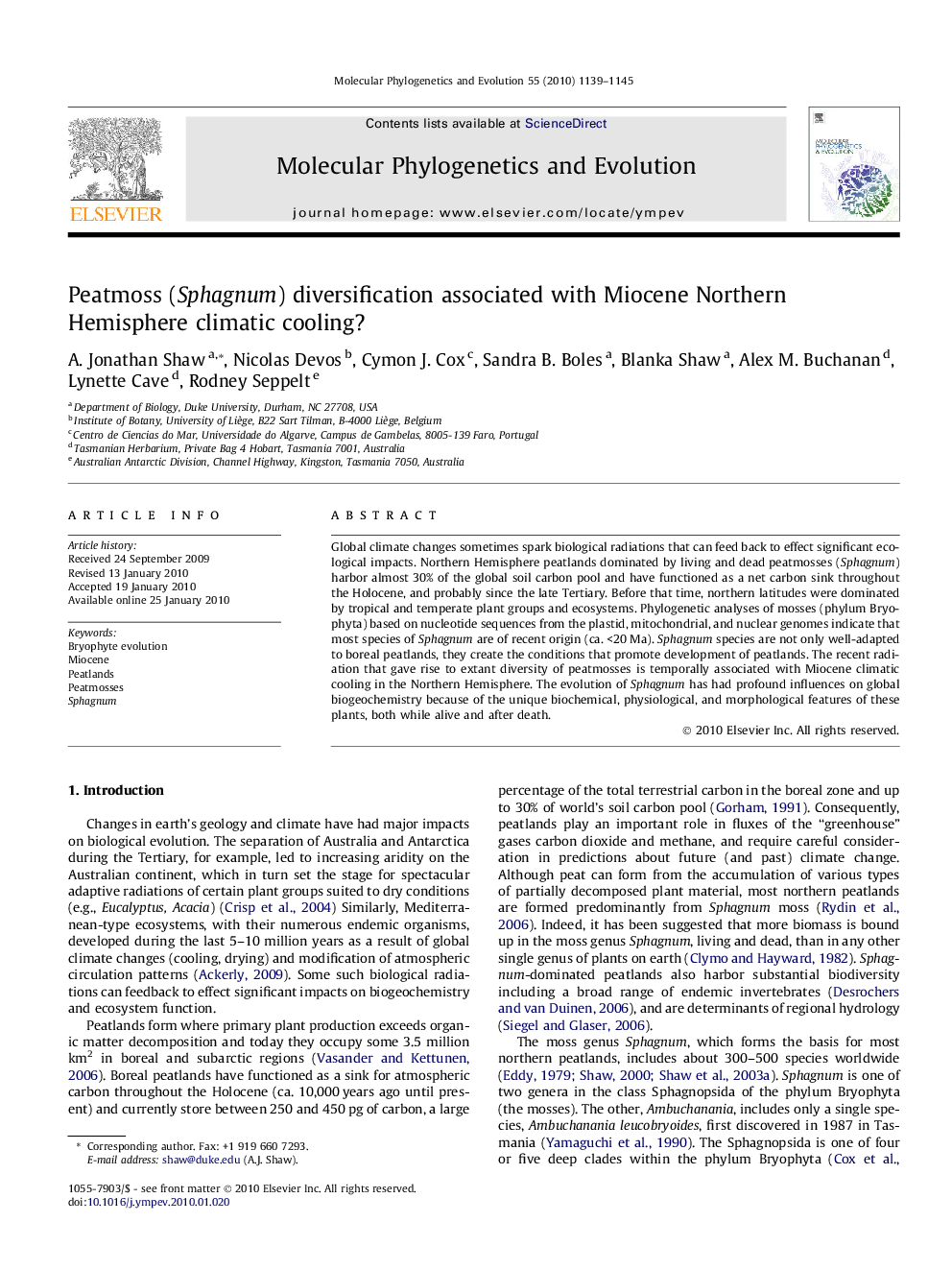| کد مقاله | کد نشریه | سال انتشار | مقاله انگلیسی | نسخه تمام متن |
|---|---|---|---|---|
| 2834686 | 1164319 | 2010 | 7 صفحه PDF | دانلود رایگان |

Global climate changes sometimes spark biological radiations that can feed back to effect significant ecological impacts. Northern Hemisphere peatlands dominated by living and dead peatmosses (Sphagnum) harbor almost 30% of the global soil carbon pool and have functioned as a net carbon sink throughout the Holocene, and probably since the late Tertiary. Before that time, northern latitudes were dominated by tropical and temperate plant groups and ecosystems. Phylogenetic analyses of mosses (phylum Bryophyta) based on nucleotide sequences from the plastid, mitochondrial, and nuclear genomes indicate that most species of Sphagnum are of recent origin (ca. <20 Ma). Sphagnum species are not only well-adapted to boreal peatlands, they create the conditions that promote development of peatlands. The recent radiation that gave rise to extant diversity of peatmosses is temporally associated with Miocene climatic cooling in the Northern Hemisphere. The evolution of Sphagnum has had profound influences on global biogeochemistry because of the unique biochemical, physiological, and morphological features of these plants, both while alive and after death.
Journal: Molecular Phylogenetics and Evolution - Volume 55, Issue 3, June 2010, Pages 1139–1145